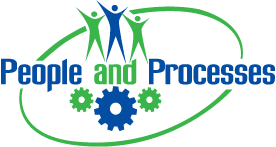For more information:
- Call us at (843) 814-3795, or
- Click the button below to email us directly

RBI3 Training Overview
RBI is a risk assessment and management tool that addresses an area of risk management not completely addressed in other organizational risk management efforts such as process hazards analyses (PHA) IOWs or Reliability Centered Maintenance (RCM)
- The RBI process is focused on maintaining the mechanical integrity of pressure equipment items and minimizing the risk of loss of containment due to deterioration while the RCM process is used to determine the maintenance requirements of any physical asset in its operating context.
- Typically, process hazards analyses PHA risk assessments focus on the process unit design and operating practices and their adequacy given the unit’s current or anticipated operating conditions (similar to RCM’s Operating Context).
- RBI complements the PHA by focusing on the mechanical integrity related damage mechanisms and risk management through inspection.
- RBI also is complementary to Reliability Centered Maintenance (RCM) programs in that both programs are focused on understanding failure modes, addressing the modes and therefore improving the reliability of equipment and process facilities.
RCM is a specific process used to identify the policies which must be implemented to manage failure modes which could cause functional failures for any physical asset in a given operating context. It does so by asking seven questions starting by: “what are the functions and associated performance standards of the asset?” Containment is a function defined through the RCM process and also the primary focus of the RBI process.
Equipment reliability programs can provide input to the probability analysis portion of an RBI program. Specifically, reliability records can be used to develop equipment failure probabilities and leak frequencies. Equipment reliability is especially important if leaks can be caused by secondary failures, such as loss of utilities. API 580 6.7.4 (Equipment Reliability) states that reliability efforts, such as RCM, can be linked with RBI, resulting in an integrated program to reduce downtime in an operating unit. At facilities with an effective RBI program, the RCM program can typically focus on the reliability aspects of equipment other than pressure equipment, and perhaps just focus on the reliability aspects of pressure equipment that do not pertain to loss of containment (e.g. tray damage and valve reliability). The integration of RCM3 with RBI3 provides the information in one location required to reduce the downtime while increasing safety and reliability.
Our RBI3 methodology is a “zero-base” approach for assisting reliability engineers to manage and address risks related to unanticipated failures of static equipment i.e. pipes, tanks, valve bodies, pump and compressor housings and pressure vessels. RBI3 is fully integrated with our other risk based approaches; Condition Assessment, RCM3 and RCFA. In simple terms, if you use one, you should use the other…
Our RBI3 methodology (integrated with RCM3) extends reliability thinking to include risk based solutions for every asset in an organization. RBI3 places reliability and asset integrity mainstream with organizations’ risk management systems and policies. Furthermore, our methodologies underpin API 580 and the International Standards for Physical Asset Management (ISO 55000), Risk Management (ISO 31000), Life-cycle costing techniques (ISO 15663: Part 1) and Production-assurance (ISO 20815).
The petroleum, petrochemical and natural gas industries have been concerned about asset integrity probably more so than most other industries and recommend specific standards to be followed for inspecting and maintaining equipment. Although RBI is mainly concerned with loss of containment failures, other functional failures could be included in an RBI study if a user desired. However, these other functional failures are usually covered within RCM programs and therefore the integration between RCM3 and RBI3 provides full coverage for effective asset management using a risk based approach.
The principal benefits of using our approach are:
- Single integrated solution for all the assets on site.
- Supporting international standards and regulations.
- Increased reliability and asset integrity.
- Improved compliance.
- Lower risk of critical equipment not being covered by a reliability approach – RCM or RBI.
- Consistent approach – common language and common set of values.
- Less time to analyze and assess equipment reliability and integrity.
- No duplication or omission of critical assets.
- Improved safety and environmental integrity.
- Reduce costs of ownership.
How does this fit with RCM3?
RCM3 is a process used to determine what must be done (including maintenance, engineering, operational, and other failure management policies) to ensure that any asset or system continue to fulfill its FUNCTIONS in its current operating context (within tolerable levels of risk as defined in the organisation’s asset management system).
It does so through the following steps:
- Define the Operating Context
- Define the Functions (what the users want the equipment to do)
- Define the Failed States (unable to fulfil its function)
- Define Failure Modes (failure causes and mechanisms?)
- Define Failure Effects (what happens when it fails?)
- Determine the Consequences (does it matter if it fails?)
- Determine Risks (quantify physical / economic risks)
- Manage risk through Proactive Maintenance Tasks
- Manage risk through Default Failure Management Policies
The RCM3 and RBI3 processes are fully integrated using the same risk definition and functional requirements. The failure modes (cause and mechanism) proactively defined during the RCM3 process become the link between RCM3 and RBI3 processes. The integration of the processes allows for seamless switching between RCM3 analysis and RBI3 review, increasing safety, integrity and reliability while saving time and money.
Since RCM3 builds on solid fundamentals, many professionals strengthen their foundation through the RCM2 foundation course before advancing to RCM3 and RBI3 methodologies.
Who should attend?
- Reliability Engineers
- Supervisors
- Planners
- Technicians
- RBI Inspectors




